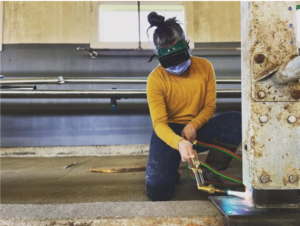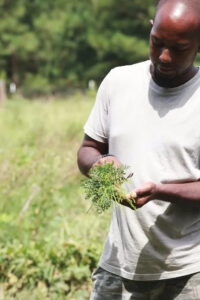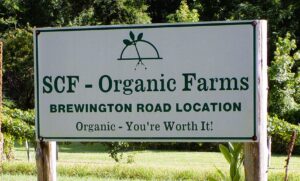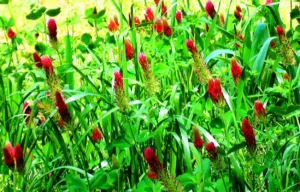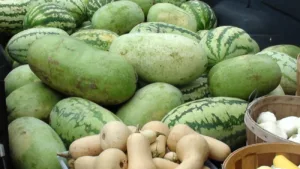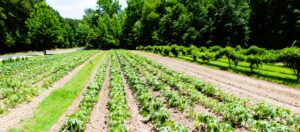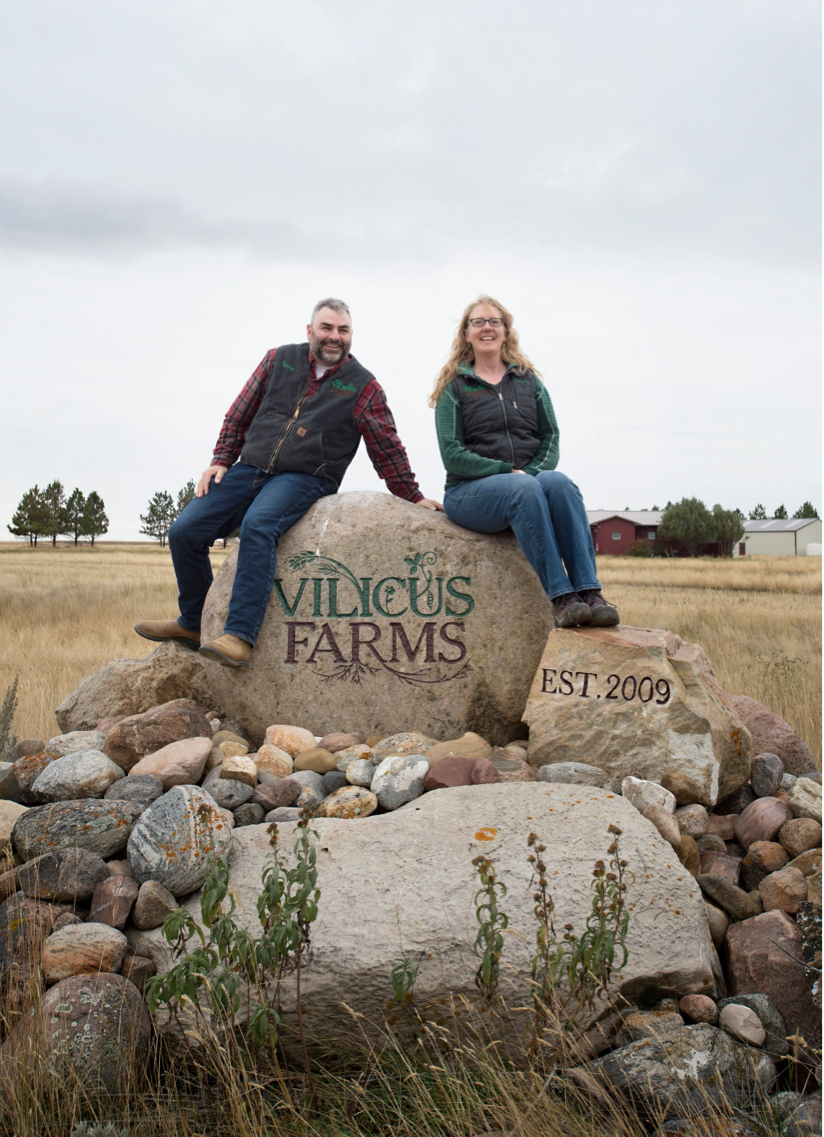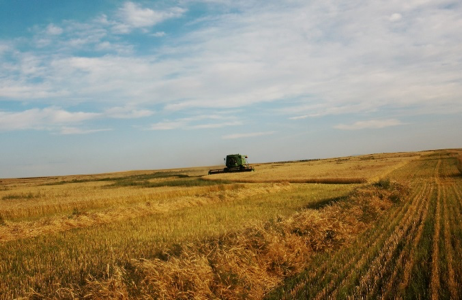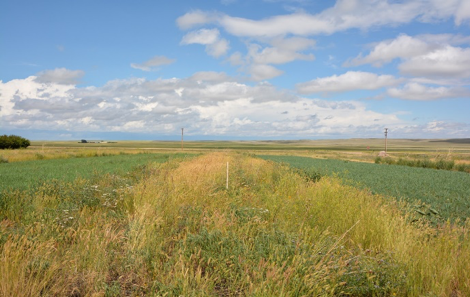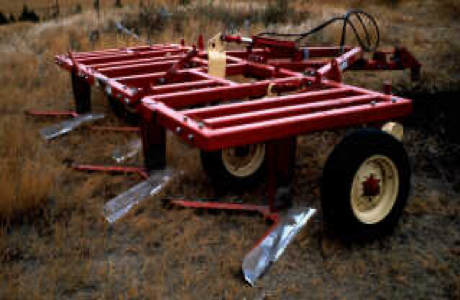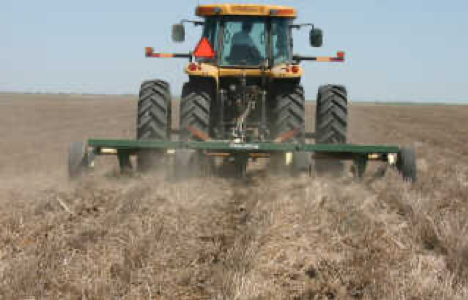Impacts of Climate Disruption on a Diversified Organic Dryland Farm
Interview by Mark Schonbeck, Research Associate, Organic Farming Research Foundation
While scientists, policy makers, and carbon marketeers debate the best agricultural practices for absorbing excess atmospheric carbon dioxide (CO2) into the soil, farmers need tools and strategies now to help them meet the day-to-day challenges posed by climate change. Contemplating this challenge, I thought immediately of Doug and Anna Jones-Crabtree of Vilicus Farms (whose name means “stewards of the land”) and wanted to learn more about how their uniquely diversified system – 27 crop species with livestock integrated into the rotation – has helped them cope with the crazy weather and keep their 12,566-acre operation economically viable. So, I contacted Doug and he graciously offered more than an hour of his time on July 9 of this year to share his climate observations.
Weather timing is critical
“We got some rain recently,” he began. “We have had a storm every evening for several days, about 2½ inches this past week. It is too late for the fall-seeded crops but will help the spring plantings.” The rain temporarily eased the impact of a prolonged and severe drought, with just 3.7 inches of moisture from June 1, 2021 to June 1, 2022, compared to the long term average annual total of 11.7 inches. “There is no normal anymore,” Doug observed. “We just cannot predict what will happen.”
Historically, the region’s four wettest months have been June, May, September, and April, which provide about 80 percent of the year’s usable moisture. Winter snows are very dry (low moisture) and mostly evaporate rather than melting into the soil. The region’s cropping systems ranging from wheat-fallow to the diverse rotation at Vilicus Farms, have been designed for this seasonal pattern. However, “that is all out the window now. Changes in annual averages, such as becoming a degree or two hotter, or annual moisture 20% less, don’t tell the whole story. It is not only how hot and dry it is, but when it is hot and dry, and when the rain comes.”
For example, when I asked Doug whether the freak Pacific Northwest heat wave in 2021 reached his farm, he said, “yes, the middle of June was our hot spell. At that time of year, our cool season crops are in their critical stage of late vegetative growth when their yield potential is determined. Usually, June is the wettest part of the year, but June 2021 brought a week of 100°F+ temperatures. Crops looked great until then but gave poor yields. Normally, we get a week or 10 days of that kind of heat in late July, when it is actually good for grain ripening.”
A diverse farming system designed for soil health and resilience
In an earlier interview, Doug outlined their diversified cropping system, which stands in stark contrast to the region’s common wheat-fallow system, consisting of winter or spring wheat followed by 18 months of chemical no-till fallow which is intended to store up an extra year’s rainfall, but deprives the soil of cover and living roots for that time. One effect of climate change is that some farmers have taken advantage of milder winters to grow more winter wheat, which has a longer growing season but still leaves soil bare and lifeless for about 14 months.
Vilicus Farms uses the following flexible seven-year rotation on most of its acreage:
- Year 1 Light feeding grain: spelt, emmer, einkorn, barley or soft wheat with lower demands for nutrients and moisture are planted April 15 – May 15. Grains are harvested in late July or August, leaving 4 – 8” stubble and straw spread across the field.
- Year 2 Green fallow: annual legume or cocktail mix planted late March or early April, or biennial sweet clover interseeded with the preceding grain crop. In June, beef manure + bedding is applied just before terminating the green fallow with shallow tillage.
- Year 3 Heavy feeding grain: hard red winter or spring wheat, or durum wheat, their highest-value crops, are planted after manure application to ensure sufficient nutrients.
- Year 4 Broadleaf crop or oats: safflower, flax, mustard, camelina, buckwheat, or oats are planted in April – May and harvested in September. Oats are included in this block because “they have a beneficial effect on the soil ecosystem, very different from other cereals.”
- Year 5 Pulse crop: pea, lentil, or chickling vetch for seed, sown in April – May and harvested in August.
- Year 6 Oats, broadleaf, or light-feeding grain: A crop not grown in the field earlier in the rotation cycle is planted in spring and harvested in August or September.
- Year 7 Green Fallow: sweet clover interseeded into the Year 6 crop (if annual covers in Year 2), or annual legumes or mix (if sweet clover in Year 2), terminated in June.
This rotation, combined with prairie strips (20-30 feet wide) for every 240 feet of cropped land, keep the soil covered year-round with living root for as much of the year as practical (Figure 1A and 1B: Unlike the region’s dominant wheat-herbicide fallow system, Vilicus Farms keeps all their acreage covered by living vegetation or residues year-round).
Augmenting soil health with mindful tillage, livestock integration, and compost
Doug and Anna have developed a tillage strategy to manage weeds and cover crops and prepare seedbeds, while protecting soil health. “I have seen a tremendous advantage to rotating type and depth of tillage,” he said. “We never use the same tool in the same field two years in a row.” Stubble and residues are left in place and are tilled just 7-10 days before planting the next crop. Their seeders are equipped with sweeps to take out small weeds that emerge during this interval. For each operation, tools are chosen based on soil conditions and the needs of the crop to be sown:
- Blade plow, which shallowly undercuts cover crops and weeds (Figure 2A and 2B).
- Speed disk, which works the top 2-3 inches of soil without inversion.
- Chisel plow with wide sweeps to lift and loosen the top 3-4 inches, followed by a coil packer to firm the soil and make weeds emerge so that planter sweeps can take them out.
- Moldboard plow 6-8 inches to bury weed seeds, then speed disk a week later. This is done for the least weed-competitive crops (flax and lentils), and only once per rotation cycle.
Additional steps to build healthy, resilient soils that the farm has undertaken in recent years include composting manure before application and integrating livestock grazing into the rotation. “Our operations foreman, Paul Neubauer, has a custom grazing business, and began grazing beef cattle on our land three years ago,” Doug said. “He developed a method to utilize grazing in lieu of tillage to terminate the green fallow. Cover crops are cut with a swather, then grazed for two or three days. I really like this system, as it effectively terminates the cover crop, and the manure stimulates soil biology.” Inspired by this success, Doug, Anna and Paul jointly acquired 12 head of Scottish Highland cattle, which they plan to breed for a future enterprise in grass-fed beef.
New climate challenges and adaptive strategies
When I asked Doug which of his crops performed best in all of the adverse weather of the past few years, he said frankly, “we don’t have any.” Fall of 2021 was so dry that fall planted grains either did not germinate or were too weak to winter over. All winter wheat and half of the rye failed, and fields were replanted with spring grains. Where rye did establish, stands are “thin and short – we’ll see what we can harvest.”
Part of the farm’s diversity and resilience strategy is increased emphasis on broadleaf and oilseed crops including mustard, camelina, and flax, as well as buckwheat for grain. Because the oilseed crops have very small seeds, the prescription for success is to till, allow weeds to emerge, then take them out with shallow sweeps mounted on the planter to provide a clean seedbed. However, the brutally dry spring of 2022 thwarted this strategy as well, as the first tillage did not stimulate weed emergence. Then, “we seeded into dust and the crop did not emerge until rain finally came in early June. The weeds came up then as well and grew faster than the crops.”
“We have asked ourselves whether we need to diversify into more warm season crops, such as millet or buckwheat,” Doug noted, adding that “we never had much success with warm season crops because July and August are usually super-dry, and we can have cold weather in June Climate change is bringing more variability, not a consistent change toward a new pattern” to which farmers might adapt by changing their crop mix or rotation. Thus, Doug and Anna face the as-yet unanswered question, “is the diversified annual cropping system we have built still viable in this ecosystem.?”
Another challenge has been the direct impact of climate disruption on soil health itself. Four out of the past five years (2017-2021) have had significantly below-average precipitation, which restricted plant growth, crop production, and net return of organic residues to the soil, making it more difficult for farmers to maintain SOM.
The Vilicus team have explored two additional approaches to diversification for climate resilience: crop-livestock integration and more perennial vegetation. “We have had times when we could grow forage but not grain, and thus we could raise meat,” Doug noted. While the green fallows provide grazing and fencing is do-able, providing water poses the steepest hurdle and greatest costs. “Livestock need to access water within a mile for the grazing system to work at all, and surface waters are scarce here, so we must truck or pipe it in.”
For grazing, Vilicus Farms prioritizes fields in which cattle have access to an installed “dugout” (pond) or other seasonal surface water feature within a half mile, or where water can be trucked from the pond to the grazing paddock. Buying and trucking-in water from the community water system is the backup plan, but it is not economically viable in the long run. Drilling new wells is risky, as groundwater is 500 to 700 feet deep, and drilling costs $30-40,000 per well regardless of whether the well provides water – which it may or may not.
While Doug does not see abandoning annual crop production as an economically viable option, he saw something this year that piqued his interest in integrating more perennials into the farm ecosystem. “In two fields with well-established shelterbelts of Russian olive (Elaeagnus angustifolius) and Russian pea shrug (Caragana frutex), the crops are noticeably healthier and more vigorous than crops elsewhere. The shelterbelts are 15-30 feet wide and occur every 200-300 feet across the field.” In contrast with low-growing prairie strips in other fields (Figure 1 right), the shrubs stand about 20 feet tall and greatly reduce wind speeds over a distance five times their height, thereby protecting the crops from drying damage by winds which can reach 50-70 mph in unprotected fields.
His observations of the shelterbelt benefits led Doug to ask, “how can we increase the proportion of perennials in our system? I like the idea of perennial grains, but they work better in Minnesota which receives more rain than Montana. Trees don’t grow here, so the next frontier may be to diversify into shrubby perennials. So often, farmers in our region are ripping out shelterbelts to increase efficiency of wheat production but getting more perennial shrub species into our system would increase resilience.” Practical hurdles to implementation include the initial cost of planting the shelterbelts and the added cost and labor to keep the plantings weeded and watered until they are well established.
As Doug contemplates options for responding to the climate challenges, he believes that we need both crops and animals, and a greater diversity of both. “I see little soil loss from native rangeland unless it is overgrazed. Look at nature – everything is polyculture. The more plant and wildlife species, the healthier and more resilient the system, so how can we emulate this?”
Rethinking farm policy and programming
For many decades, mainstream agriculture has increasingly relied on subsidies and crop insurance to remain economically viable, and these financial supports have focused on a short list of the most productive crops: wheat in Montana and other low-rainfall regions, corn and soy in the Midwest, and cotton in the South. As increasingly erratic weather has made yields more unpredictable and crop failures more frequent, crop insurance has become a vital component of climate resilience strategies for all farms. Vilicus Farms carries crop insurance, and in bad years, the indemnity payments have helped keep the farm afloat. He especially appreciated the supplemental check that arrived this spring as part of the Emergency Relief Program (ERP).
At the same time, Doug is extremely concerned that USDA programs and policies are designed to discourage the kind of agroecosystem and enterprise diversity that is so urgently needed for true resilience. “There are such excellent subsidies for wheat now that the intelligent economic response to the climate crisis at this time is – just grow wheat. The crop insurance is cheap, and it provides a tight safety net. It makes no sense not to carry multiperil insurance for primary crops like wheat – it is too good not to have. But it reinforces the lack of crop diversity.”
I asked, “what about the Whole Farm Revenue Program (WFRP) – isn’t that one designed for diversified systems, and to reward increased diversity?” In response, Doug noted that Vilicus Farm has carried WFRP for the past four or five years, as well as multiperil insurance for wheat and flax. However, WFRP coverage is not nearly as robust as the single-crop multiperil policies. In addition, while USDA rules allow farmers to carry both, the value of single-crop insurance coverage and any indemnity payments therefrom are deducted from WFRP, so that the latter rarely yields any benefit. Thus, Vilicus Farms will drop WFRP and seek crop-by-crop policies for all their crops.
While NRCS programs can support diversity (for example, the prairie strips and diverse rotation, which are part of Vilicus Farms’ CSP contract), “most of what the Farm Services Agency (FSA) offers works best for the least diverse farming systems.” For example, FSA requires semiannual, field-by-field reporting of crop plantings. This works OK for a wheat-only system, but “we grow 27 crops in small strips, so we have to track, in effect, 385 separate fields, a task that took three people two full days to complete.”
Citing an urgent need to decouple the long-term service work of land stewardship from the year-to-year income stream from farm production, Doug and Anna launched a new program in 2022: Community Supported Stewardship Agriculture (CSSA). While growing climate instability causes yields and income to vary wildly from year to year, Vilicus Farms remains committed to building the health of their soils and agroecosystem 365 days of every year and incurs the costs regardless of return. The new CSSA program offers people an opportunity for people who care about land stewardship, agriculture and food to have a direct connection to Vilicus and each other.
In conclusion, Doug notes that “We are trying to build climate resilience by doubling down on crop diversity, but this is counter to current policy and programs, which are based on assumptions widely held by society at large and are reflected in USDA programs.” In order to truly meet the challenges of the climate crisis, “we need a robust conversation at the highest levels of decision-makers on what kind of agricultural system we want to support.”
For me, these conversations with Doug also underlined the importance of research into truly climate resilient and climate-mitigating agricultural systems, with emphasis on functionally diverse agroecosystems including crop-livestock integrated, perennial-annual integrated, and agroforestry systems. USDA research should prioritize organic farming, which protects the soil life by avoiding synthetic agrochemicals and can build soil organic carbon and improve nutrient cycling through advanced soil health practices. Farmers must take their proper place as leaders and equal partners with university scientists to ensure that practical solutions emerge. Finally, it of utmost urgency that the US and the world cut greenhouse gas emissions sufficiently and soon enough to stop further climate disruption to save farmer livelihoods, food security, and the future of human civilization.
This story is based on telephone interviews with Doug Crabtree on March 23 and July 9, 2022.
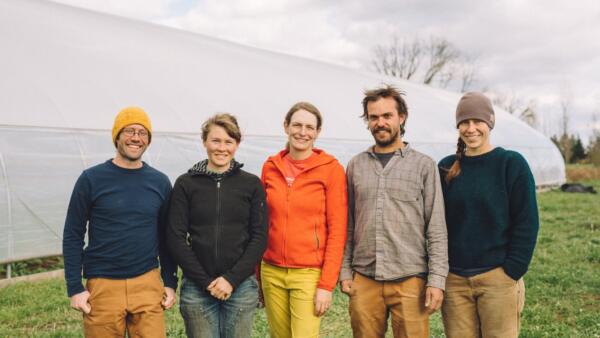
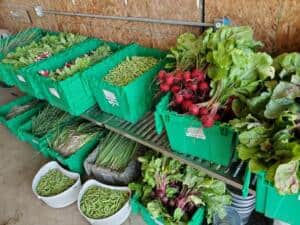





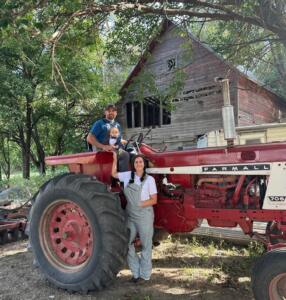
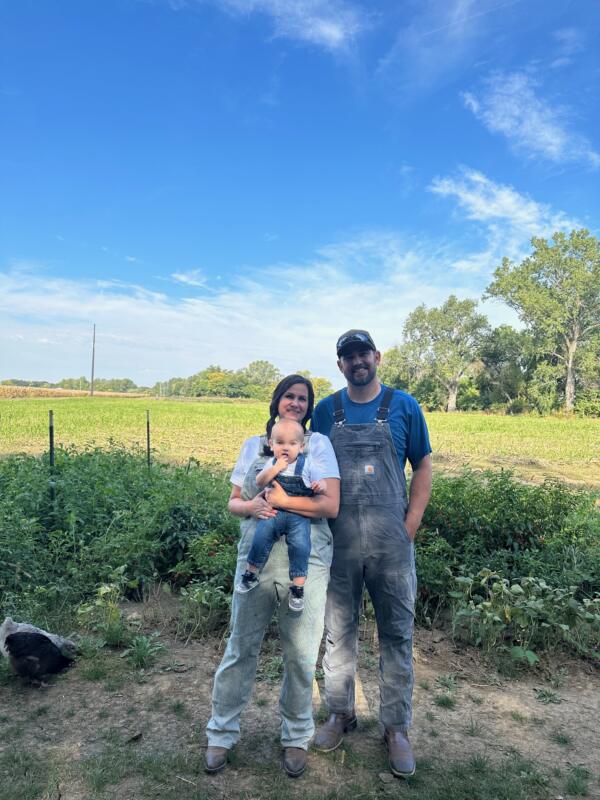
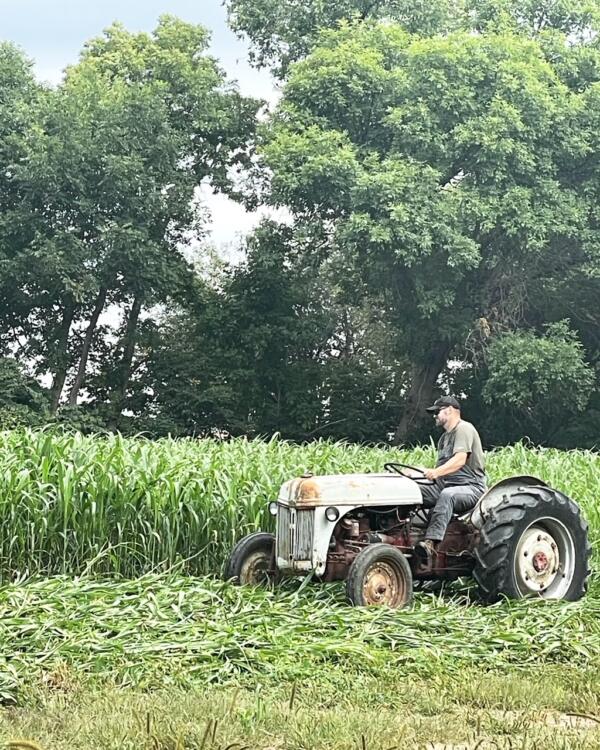

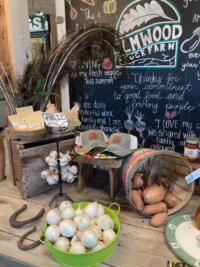 Elmwood Stock Farm is a diversified organic farm in Georgetown, Kentucky, producing mixed vegetables, fruits, beef, chicken, turkey, lamb, pork and value-added products. As a sixth-generation farm, Elmwood has learned to adapt to changing times, shifts in market opportunities, and modifications in state and Federal support programs over the generations. For farmer John Bell, a key to Elmwood’s success has been an ongoing fertility program based on crop-livestock integration and long crop rotations. For the Bell family, the presence of livestock and the practice of crop rotations are part of a family-farm heritage, one that has long been supported by programs like those offered by the
Elmwood Stock Farm is a diversified organic farm in Georgetown, Kentucky, producing mixed vegetables, fruits, beef, chicken, turkey, lamb, pork and value-added products. As a sixth-generation farm, Elmwood has learned to adapt to changing times, shifts in market opportunities, and modifications in state and Federal support programs over the generations. For farmer John Bell, a key to Elmwood’s success has been an ongoing fertility program based on crop-livestock integration and long crop rotations. For the Bell family, the presence of livestock and the practice of crop rotations are part of a family-farm heritage, one that has long been supported by programs like those offered by the 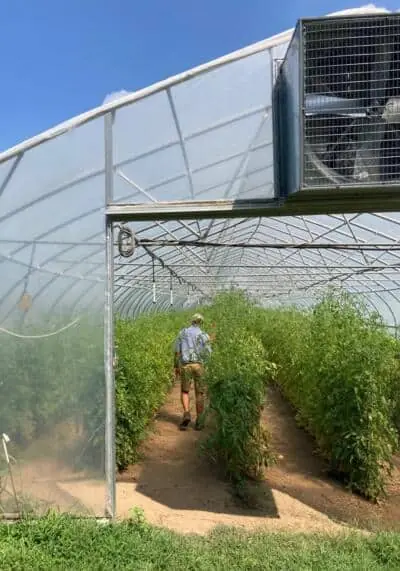
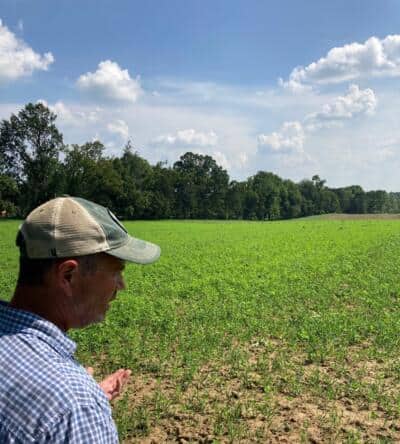

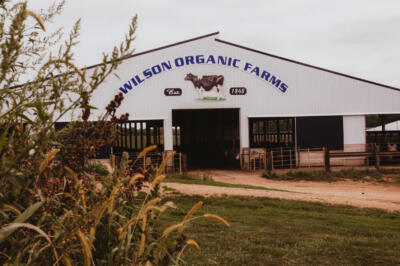
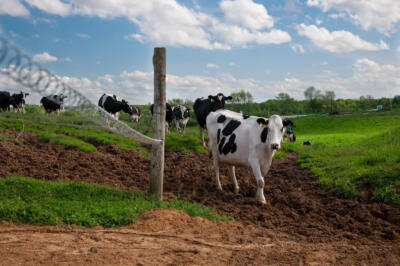
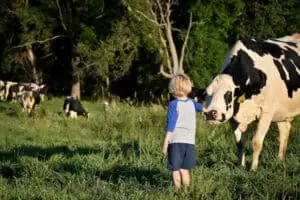

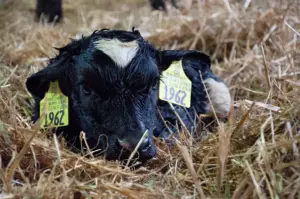
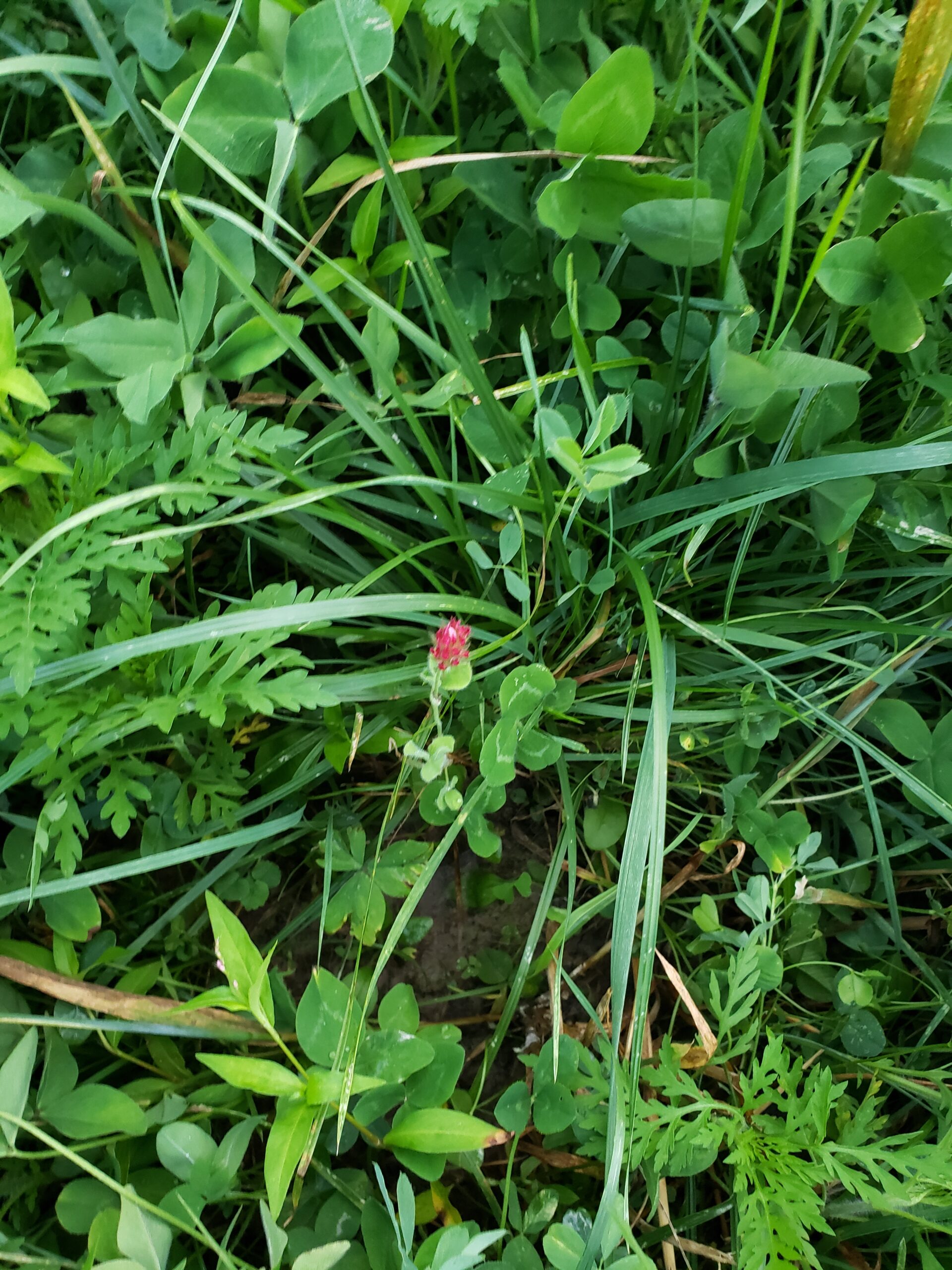
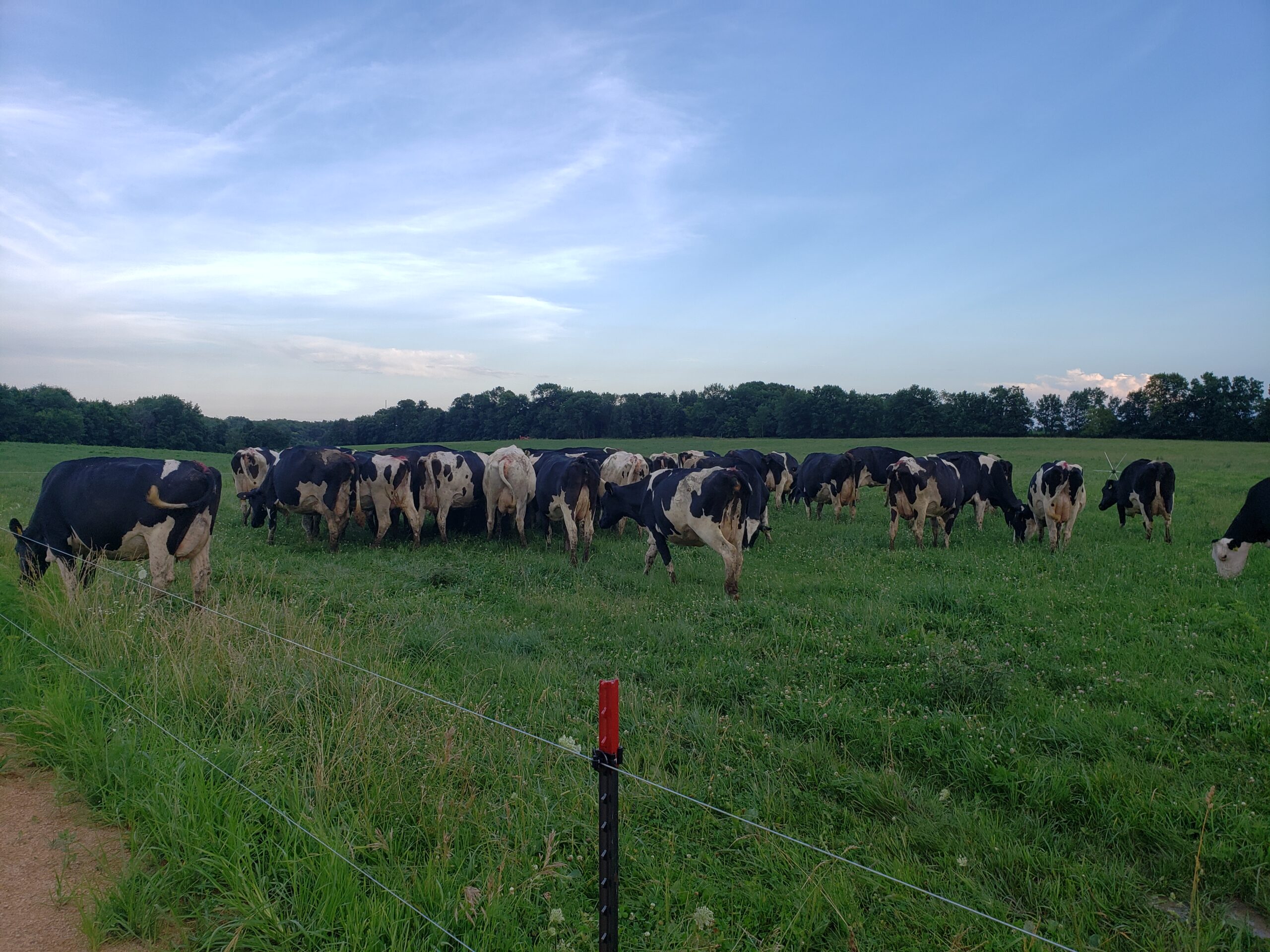
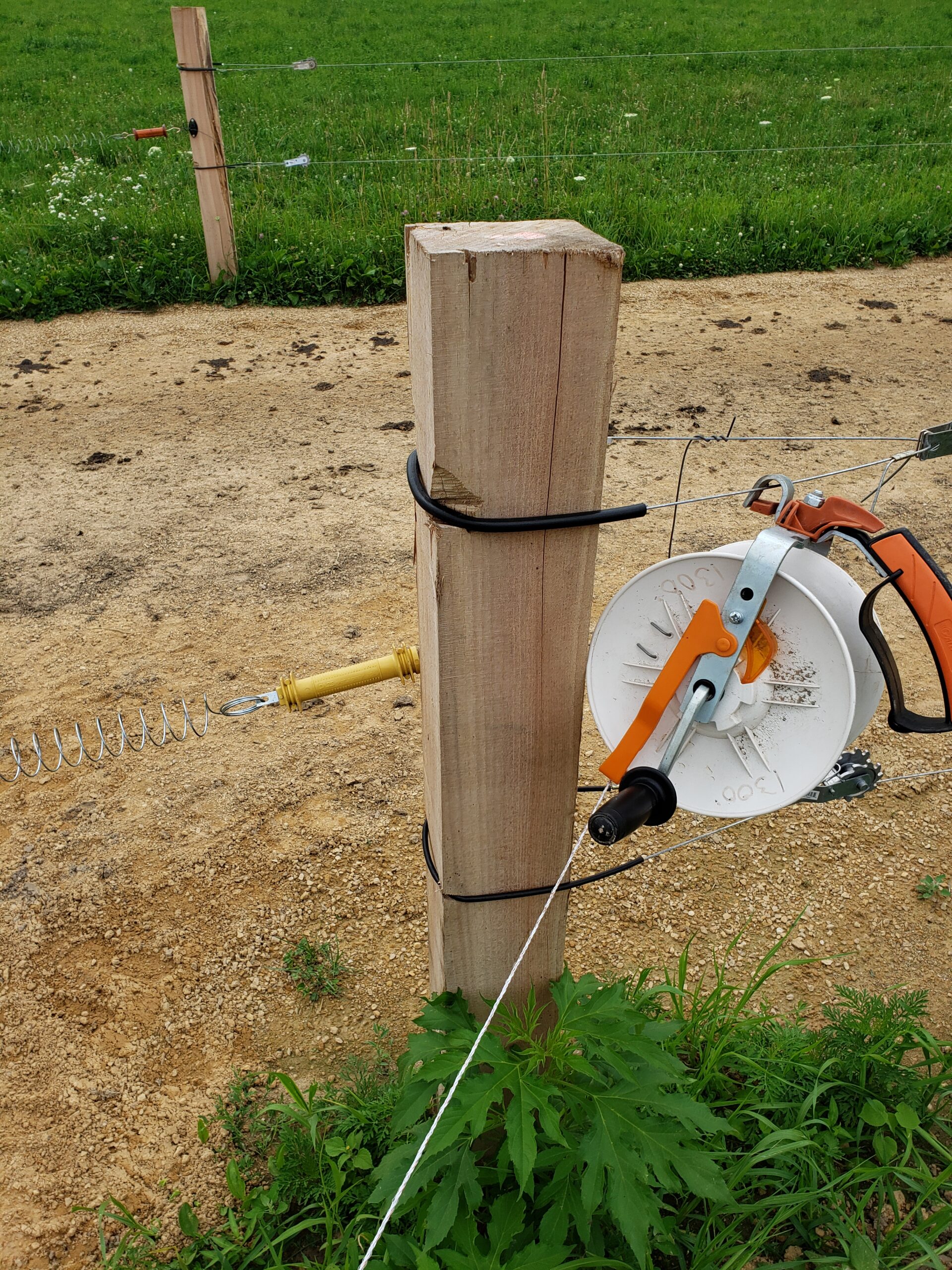
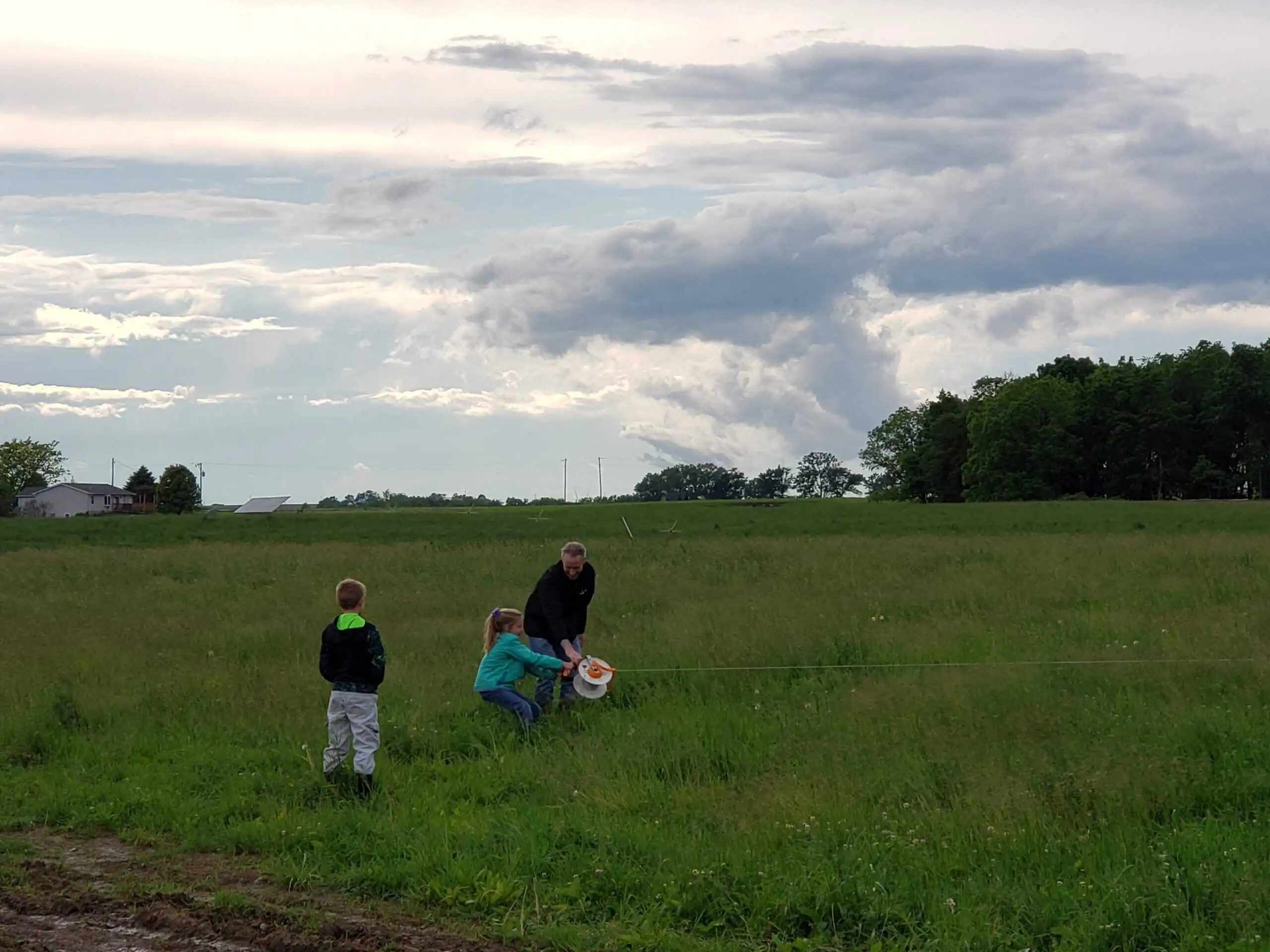
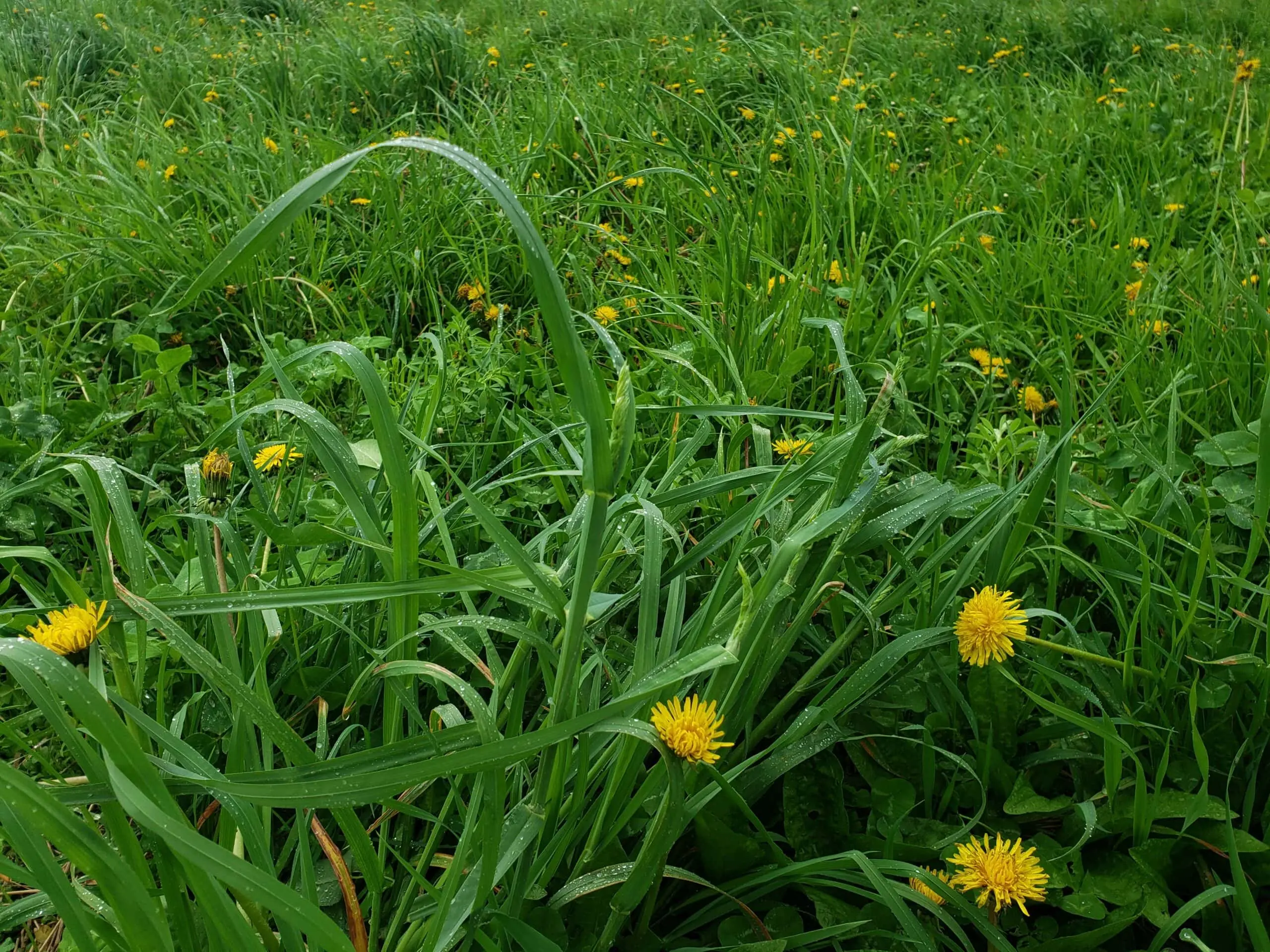
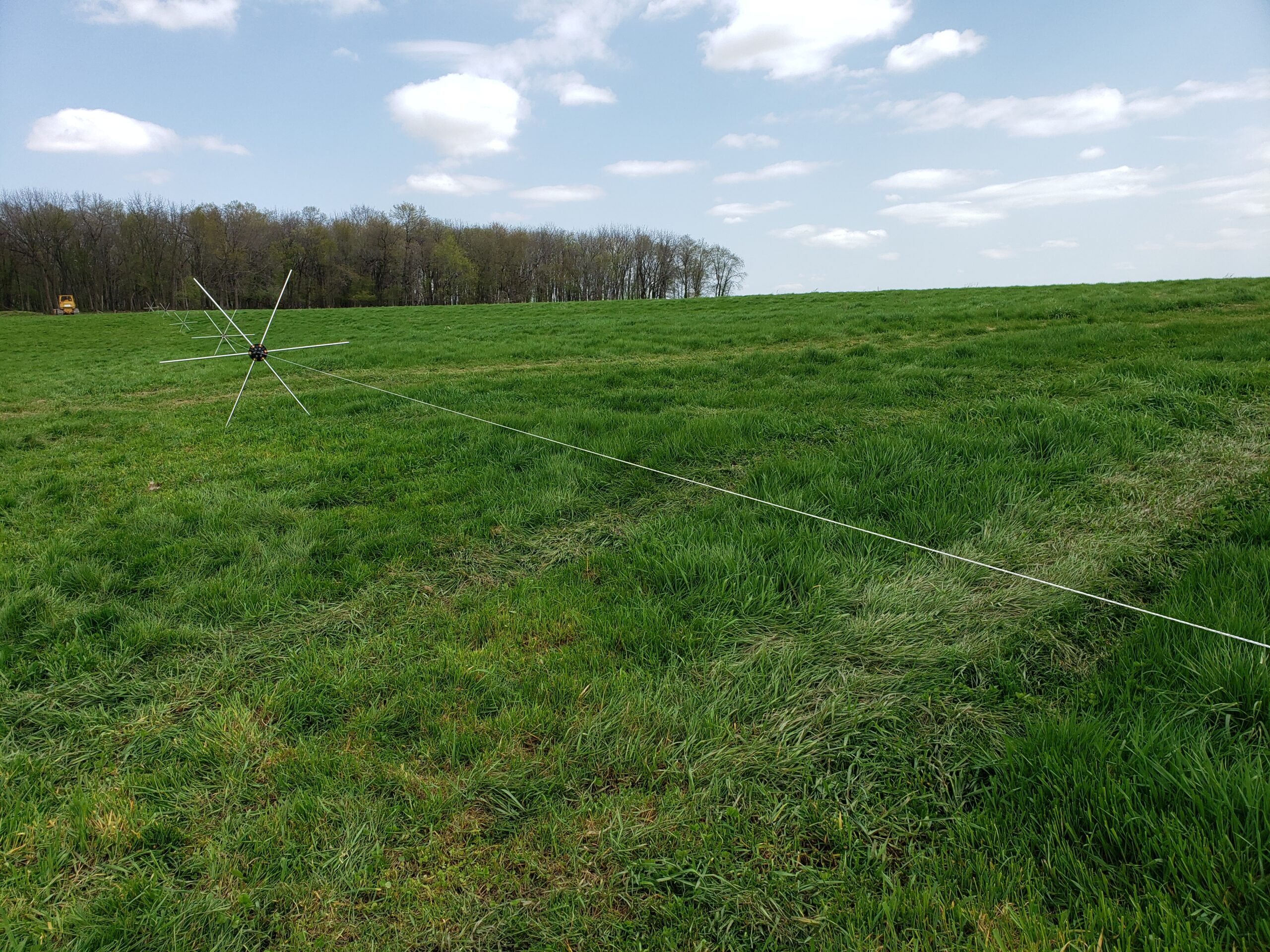
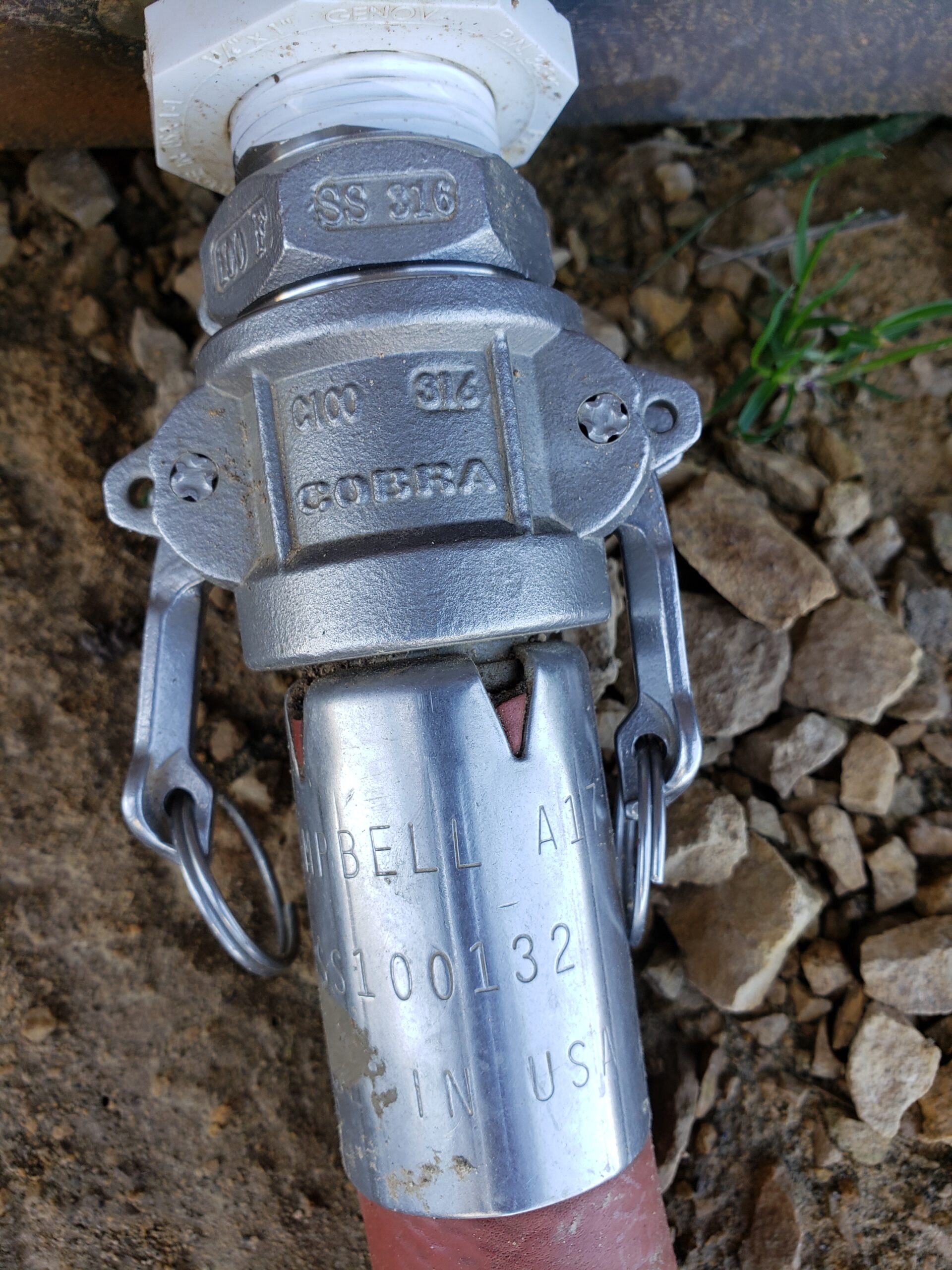
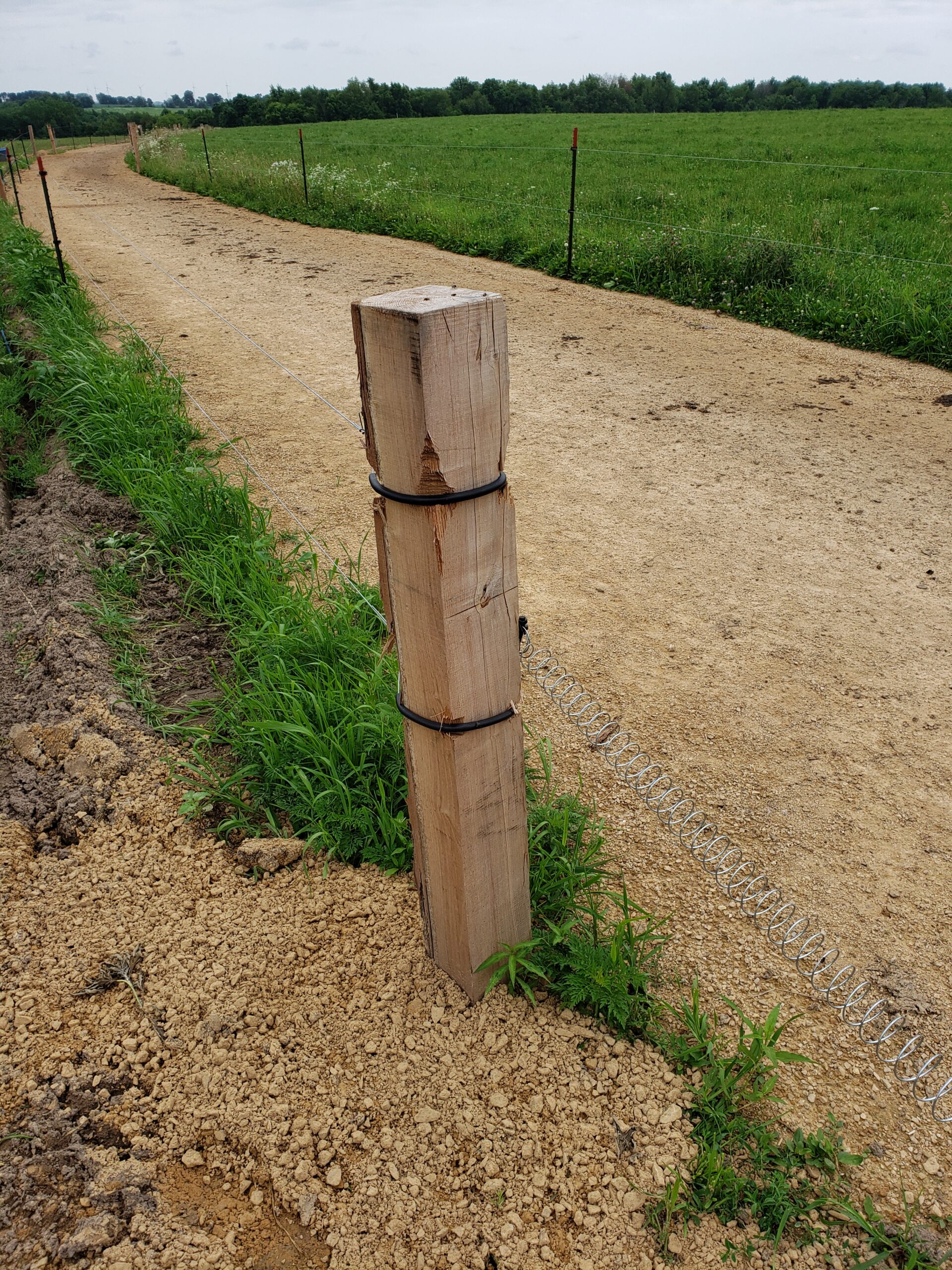
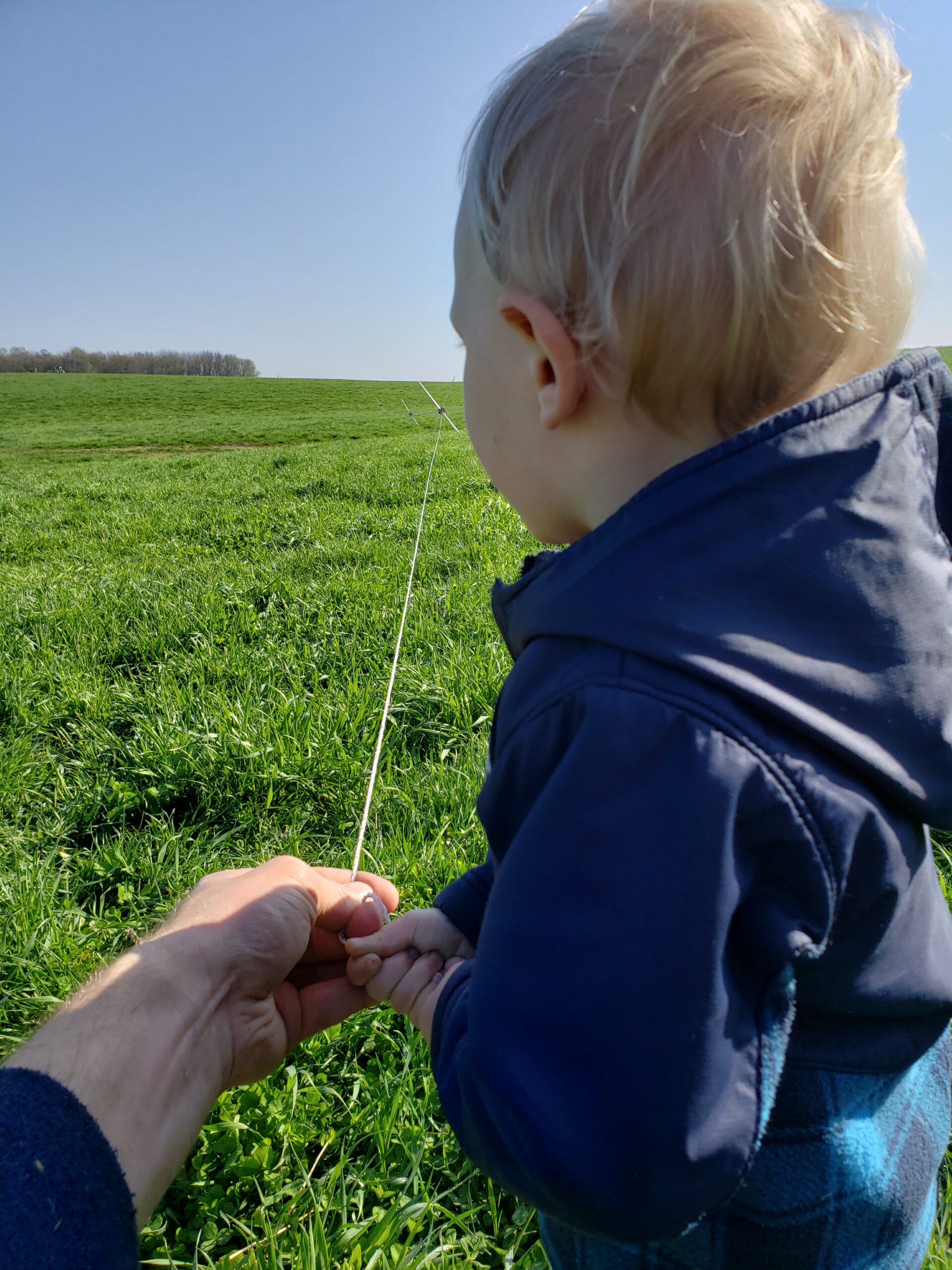

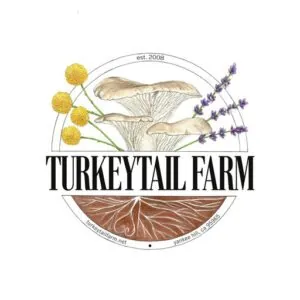 On our farm we have been working with NRCS for over 10 years. On our land we have completed cost-shares that encompass brush clearing, targeted grazing, erosion control, pasture seeding, and development of bird and bat habitat. Most recently we have drilled an additional water-well for livestock. As part of this cost-share we have a network of gravity fed livestock wells and added water storage capacity, a definite boon in the era of megafires and climate chaos.
On our farm we have been working with NRCS for over 10 years. On our land we have completed cost-shares that encompass brush clearing, targeted grazing, erosion control, pasture seeding, and development of bird and bat habitat. Most recently we have drilled an additional water-well for livestock. As part of this cost-share we have a network of gravity fed livestock wells and added water storage capacity, a definite boon in the era of megafires and climate chaos. “We grow many of the same crops my grandmother grew, such as unique varieties of delicious colorful vegetables, fruit, and herbs,” says Taylor. And while today the farming practices at LOF differentiate it from nearby farms (LOF is one of the only certified organic farms in the surrounding counties), growing organically is not new to the family’s farming practices. “When my grandmother was farming,” explains Taylor, “she used organic farming practices before organic certification even existed. For us, organic farming and agroecology not only builds healthy soil and healthy environments, but also supports access to healthy foods in our communities. I believe organic farming systems can, and should, be enjoyed by all farmers and consumers – in all communities.” LOF has been certified organic since 2011, and the label has helped them access markets. “It speaks to the customers,” Taylor says.
“We grow many of the same crops my grandmother grew, such as unique varieties of delicious colorful vegetables, fruit, and herbs,” says Taylor. And while today the farming practices at LOF differentiate it from nearby farms (LOF is one of the only certified organic farms in the surrounding counties), growing organically is not new to the family’s farming practices. “When my grandmother was farming,” explains Taylor, “she used organic farming practices before organic certification even existed. For us, organic farming and agroecology not only builds healthy soil and healthy environments, but also supports access to healthy foods in our communities. I believe organic farming systems can, and should, be enjoyed by all farmers and consumers – in all communities.” LOF has been certified organic since 2011, and the label has helped them access markets. “It speaks to the customers,” Taylor says. 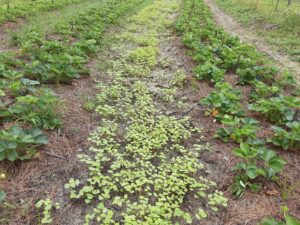

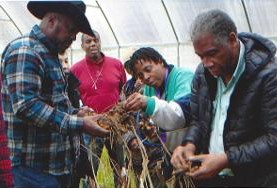
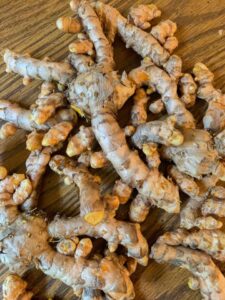
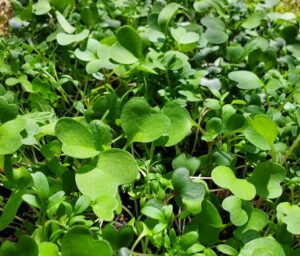
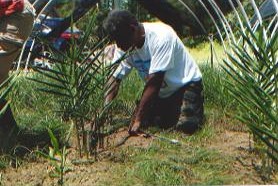
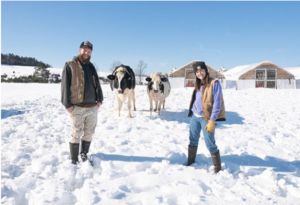
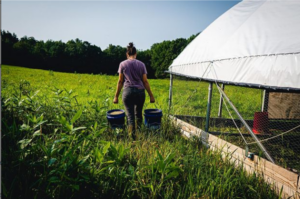 One of the priorities for Haden and Katie was to restore nutrients to the land to enhance the soil on their farm. “The land had sat fallow for a period of time and also had been rented off and on for about a decade. A hay crop was taken off, for example, and no nutrients were put back. A couple of parcels had been farmed in corn continuously for five or six years, and we were having trouble with those areas. We wanted to get it back into perennial grass and grazing annual production in other areas,” says Katie.
One of the priorities for Haden and Katie was to restore nutrients to the land to enhance the soil on their farm. “The land had sat fallow for a period of time and also had been rented off and on for about a decade. A hay crop was taken off, for example, and no nutrients were put back. A couple of parcels had been farmed in corn continuously for five or six years, and we were having trouble with those areas. We wanted to get it back into perennial grass and grazing annual production in other areas,” says Katie.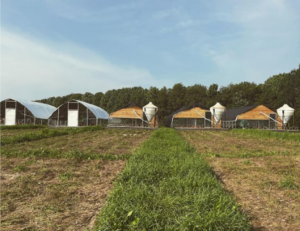 Haden had already launched a pasture-raised poultry operation in 2020 on leased land. Through a contract with a New England based meat company, the chickens consume only non-GMO feed and are antibiotic free. Mayday Farm now does about 24,000 broiler chickens from April through November. “They are great little fertilizer tools,” Katie says. “We rotate them once a day to a different pasture on the farm that we thought really needed help. Now we get the benefit of all of the poultry manure going right onto the fields, and we’re really excited to see the impact of that.”
Haden had already launched a pasture-raised poultry operation in 2020 on leased land. Through a contract with a New England based meat company, the chickens consume only non-GMO feed and are antibiotic free. Mayday Farm now does about 24,000 broiler chickens from April through November. “They are great little fertilizer tools,” Katie says. “We rotate them once a day to a different pasture on the farm that we thought really needed help. Now we get the benefit of all of the poultry manure going right onto the fields, and we’re really excited to see the impact of that.” 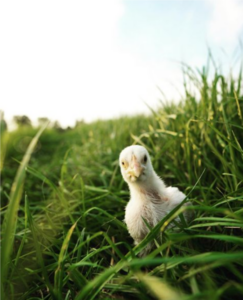
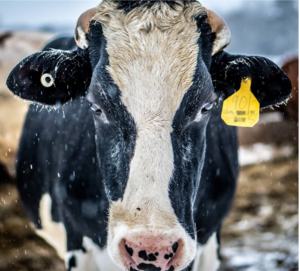 Mayday’s intention is to build back the soil and forage species and to find balance in their conservation practices. “We did a whole batch of soil samples just to get a baseline for where we’re at with organic matter and to get an idea of where there might be mineral deficiencies on the farm,” says Katie. “We spread our stored manure from the cows on our hay fields, but we’ve also been using organic wood ash as a minimal supplement where we need to change the soil pH.” They are also in the early phases of working with the USDA
Mayday’s intention is to build back the soil and forage species and to find balance in their conservation practices. “We did a whole batch of soil samples just to get a baseline for where we’re at with organic matter and to get an idea of where there might be mineral deficiencies on the farm,” says Katie. “We spread our stored manure from the cows on our hay fields, but we’ve also been using organic wood ash as a minimal supplement where we need to change the soil pH.” They are also in the early phases of working with the USDA 